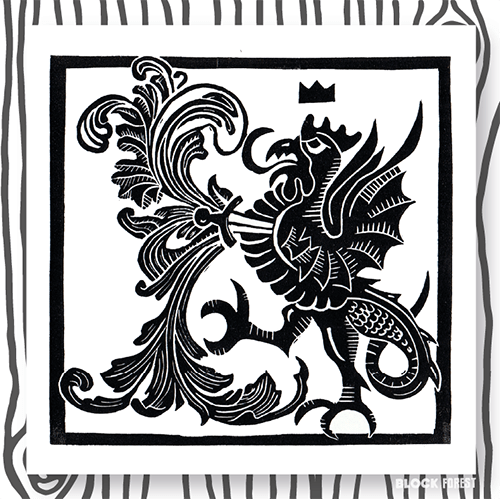
The Cockatrice
Share
Wherwell, Hampshire, England.
Wherwell is a small, picturesque village on the River Test in Hampshire, England.
It has been in existence since the Middle Ages, mentioned as far back as AD 955 as “Hwerwyl” meaning “cauldron springs”, likely due to the natural springs in this region.
Originally home to an Abbey (destroyed in a fire in 1227), the later Wherwell Priory was home to a group of Benedictine Nuns until its dissolution in 1540 by then Monarch, Henry VIII.
It was sometime before its dissolution that the supernatural arrived in Wherwell, and it all centered around a most unnatural incident, that of a toad incubating a cock’s egg.

Now, we all know cocks (or roosters depending where you’re from) don’t lay, but it was an olden times superstition that if you found an abnormally small egg on your morning rounds, that this had in fact been laid by the cockerel, hence the name cock’s egg.
If you don’t believe me there was even a recorded case in 1474 that a cock was put on trial for laying an egg, found guilty, and burnt alive as a warning to other cocks not to repeat his folly - you must admire the unbounded imagination of our ancestors before tv and video games hey.
Some versions of the legend have it that it was in fact a duck’s egg, allegedly leading to some villagers shunning them until as late as the 1930s, but I digress, back to the tale.
It was in the bowels of the priory that a holy union of toad and the impossible egg led to the birth of one of England’s legendary monsters, the Cockatrice.
Cockatrices are two-legged dragons or serpents, with the head of a cockerel, having their earliest mention in the Bible as a fiery, poisonous serpent. It is akin to the Greek Basilisk, and some believe it to be the same cryptid in all but name.
The Cockatrice, like the Basilisk, could kill people by looking at them, touching them, or sometimes breathing on them, the weasel being the only animal seemingly immune, and the only way to kill one was to get it to look at its own reflection.
 |
 |
|
“Some time before Wherwell Priory, Hampshire, was dissolved in 1538, a toad incubating a cock’s egg in one of its cellars hatched out a cockatrice”
When Wherwell’s Cockatrice had hatched and begun to terrorise the local denizens, mainly by eating them, a reward was put out to anyone who could slay the beast. Four acres of land was a tempting prize, and many died in their attempts until a man named Green found the Cockatrices lair and attempted to kill it by lowering a mirror of polished steel into it. It was said to take four days of the monster battling with its own reflection until it exhausted itself enough for Green to descend into the pit and run it through with a spear to seal its fate.
In Harewood Forest, just north of the village there is rumoured to be an area called ‘Green Acres’ where no trees will grow, and this is said to be the land that was given to the man named Green as his reward, possibly even the land on which the Cockatrice was killed.
The tale has left a lasting mark on this sleepy hamlet, the local church has a mat at the lectern describing the legend, a local community singing group is aptly named the Cockatrice Community Singers, a mosaic in nearby Andover depicts the beast, and a new weathervane on the town hall replaces the old one that once sat upon the church - all inspired by this mythical creature. And the Cockatrice can be found in other lands too, with an appearance on Belvedere Castle in New Yorks Central Park, and in popular media such as The Witcher books and video games.
 |
 |
 |
My interpretation of the Cockatrice was inspired by both this myth and by the tradition of heraldry, sporting a filigree spurt of blood erupting from a sword piercing the creature’s breast. You can find prints of it for sale on my Etsy.
Cockatrices are rarely found in heraldry, where you are more likely to find wyverns or dragons, alongside lions, stags, and other more commonplace creatures. The rare exception seems to be the Langleys of Agecroft Hall in Lancashire who have had a Cockatrice as their heraldic beast as far back as the 14th Century. As a strange sideline, Agecroft Hall now stands in America, after having been moved by Mr. Thomas C. Williams, Jr of Richmond, Virginia, after he wished to build a true English manor in the New World. As far as I’m aware, however, there have been no tales of marauding Cockatrices in Richmond, Virginia.
 |
 |
 |
I hope you have enjoyed this entry in the blockforest bestiary. until next time dear reader…
Sources:
Nature on Trial: The Case of the Rooster that Laid an Egg
Munrano Chicken Farm: The Legend of the Cock Egg
Love Andover: The Beast of Wherwell Priory
Mysterious Britain - The Wherwell Cockatrice
Hampshire History - The Wherwell Cockatrice
KJV Today - Cockatrice or Adder in Isaiah

